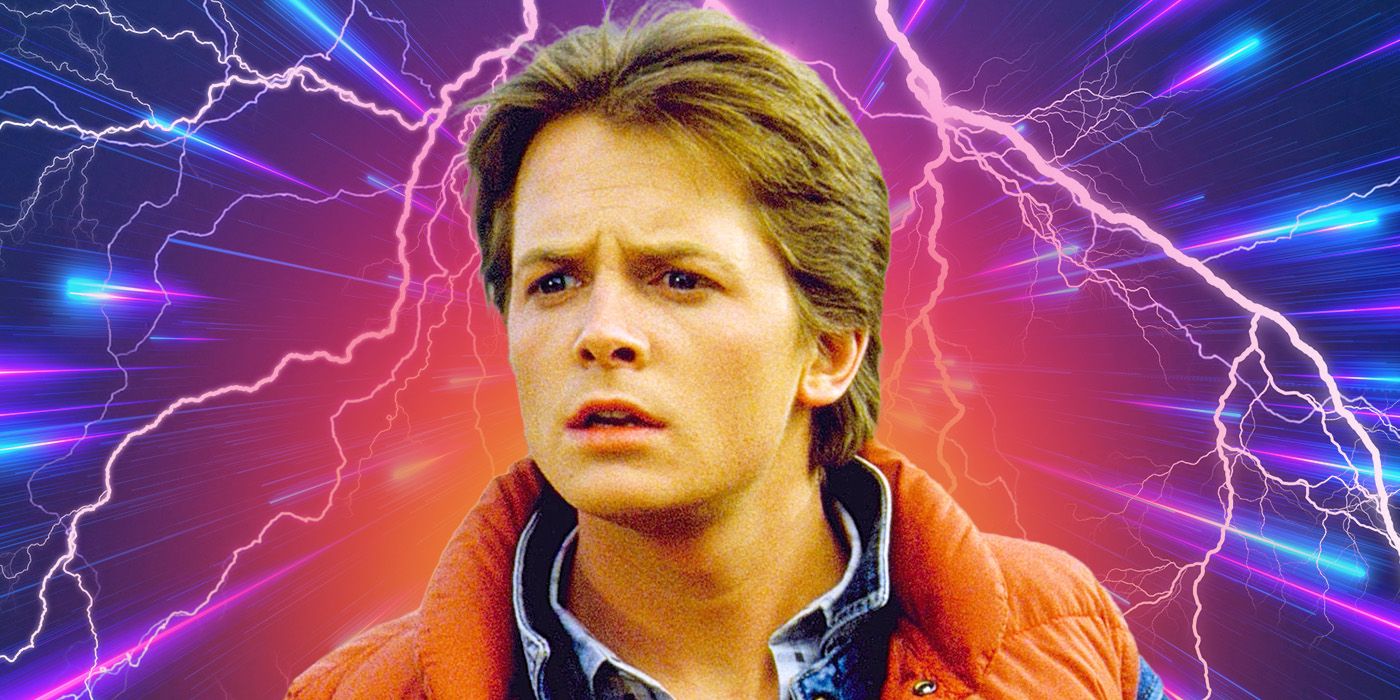‘Back to the Future Part II’s Sports Almanac Is Always Correct — But How the Heck Does That Work?

At one point in Back to the Future Part II, Marty McFly (Michael J. Fox) comes back to a dystopian present Hill Valley, the byproduct of Biff Tannen’s (Thomas F. Wilson) acquisition of Grays Sports Almanac, a collection of final results in a wide variety of sports from 1950 all the way up to 2000. The antagonist is Richie Rich rich, thanks to his impressive run of successful sports bets, made by placing money down on games he already knows the outcome of, thanks to Grays. But the Back to the Future films changed the timeline more often than Christopher Lloyd‘s Doc Brown talks about the space-time continuum being affected by such changes. So, if the timeline isn’t consistent, how can Grays Sports Almanac always be right?
The ‘Back to the Future’ Films Already Explain Why Grays Sports Almanac is Always Right
Actually, the Back to the Future films already explain how it’s possible for Grays Sports Almanac to always be right. The films are driven by the premise of the “ripple effect,” where any change in the timeline changes everything in the future of that timeline. For example, in Back to the Future, Marty pushes his father George (Crispin Glover) out of the way of an oncoming car after George falls out of the tree he was in, cringingly spying on Lorraine (Lea Thompson), a moment that hasn’t aged well (but better than this deleted scene would have). That change led to a chain of events that slowly began erasing his siblings from existence, and almost himself before the timeline was “corrected” with a happier future for the McFly family, thanks to the ripple effect of George grabbing a set and hitting Biff.
In Back to the Future Part III, that ripple effect is evidenced in how Shonash Ravine, renamed Clayton Ravine in 1885 after Clara Clayton (Mary Steenburgen) is killed going over the edge, becomes “Eastwood Ravine” after it’s assumed that Marty’s Clint Eastwood persona died going over the edge in the runaway locomotive (that, suspiciously, was traveling at 88 mph when it hit the ravine). So, with the logic of the time travel rules in Back to the Future established, it stands to reason that changes to the timeline would also alter any entries in Grays Sports Almanac for games whose outcomes were also altered.
The Inherent Flaw in ‘Back to the Future Part II’s Grays Sports Almanac
It makes sense that the Almanac would also be affected by timeline changes, being just one of the many things that get skewed with changes to the timeline. However, the logic of Back to the Future itself has an inherent flaw that Grays Sports Almanac would be evidence of. It’s easy enough to believe that the Almanac’s results would be altered, but what about the Almanac itself? See, there are certain conveniences that Back to the Future allows itself, like timing the DeLorean to hit the mark at the exact minute of the clock tower being struck by lightning, but somehow lucking out with the exact window of mere seconds within it, or neither George nor Lorraine finding it odd that their son looks suspiciously like that Calvin Klein fella they met back in high school.

Related
A movie version of ‘Back to the Future: The Musical’ might just rip the space-time continuum apart.
Likewise, the mere existence of Grays Sports Almanac, in spite of changes to the timeline, is convenient. It presumes that the publisher of the book never went bankrupt, the book was printed, or that the store Marty picked it up from existed, let alone had the book in the front window, especially 15 years after the last recorded events in Grays Sports Almanac. The presumption that the book would still exist is harder to believe than the content of it being right all the time.
Then again, Biff would only have had to have a successful streak of gambling wins for a relatively short period of time before investing that money in other capital ventures, meaning the book isn’t the sole means of continuing to grow his fortune (and turn Hill Valley into Hell Valley and Lorraine into Jane Russell). Besides, according to a physics student at the University of Queensland, the paradox of time travel, that ripple effect, is bollocks. In a nutshell, the math dictates that not only is it theoretically possible to travel back in time, but you could do whatever you want without making any fundamental changes to the present. He did not calculate if 1.21 gigawatts, in a vehicle going 88 mph, would allow for time travel, however. And probably picked the Chiefs to win the Super Bowl.





